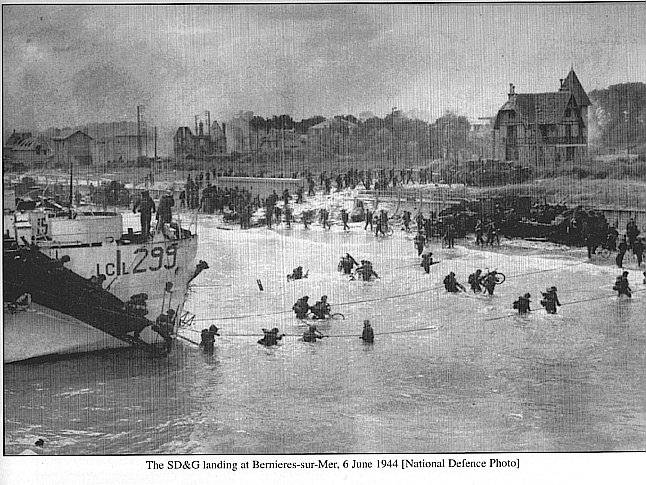 |
 |
The Stormont, Dundas and Glengarry Highlanders are
descended from many Canadian militia units and two
regular British Army regiments. They are also rooted in a
community that began as a soldiers' settlement.
After the surrender at Yorktown, veterans of the King's Royal
Regiment of New York and the 84th Highland Emigrant
Regiment were given land on the north bank of the St.
Lawrence River so they could defend Upper Canada from the
new enemy to the south. In 1804, veterans of the Glengarry
Fencibles, a Highland regiment that served in Europe with the
British Army, settled just north of the American Revolutionary
War veterans. The first militia unit west of Montreal was
organized at Comwall in 1787 under the command of Major
John Macdonnell, late of the KRRNY. During the War of 1812.
the area militia and the Glengarry Light Infantry Fencibles
helped the British Army fight off the Americans. Only breaks
in unit continuity in the pre-Confederation period deny the
Regiment the "Niagara" battle honour and the status of oldest
anglophone militia regiment in Canada.
The population of Upper Canada grew after 1814, and
Stormont and Dundas counties soon had two militia
regiments each and Glengarry County had four. All units
fought the rebels of 1837-1838, two in Lower Canada and
three at the 1838 Battle of the Windmill, where 10 militiamen
were killed and 13 wounded.
The 1855 Militia Act introduced voluntary service, and the United
Counties raised four independent companies in 1862. After the 1866
Fenjan raid, which aroused great fear of invasion, these companies
and four others amalgamated in 1868 to form the 59th Stormont and
Glengarry Battalion of Infantry, which was called out against the
Fenians in 1870. Nine Stormont and Glengarry men served in the
Boer War.
At the outbreak of the First World War, the Regiment - in Highland
dress since 1904 - guarded the St. Lawrence canals until December
1915, when the United Counties raised the 154th Battalion for the
Canadian Expeditionary Force. (The 59th also contributed soldiers
to the 2rid, 21st, 38th, 73rd and 253rd Battalions of the CEF.)
The 154 th Battalion went overseas but was broken up to reinforce
the "Iron Second," the 21st and 38th Battalions and the 4 th Canadian
Mounted Rifles. Of the 154th Battalion soldiers, 143 were killed and 397
wounded; their efforts are commemorated in 24 decorations and
six battle honours.
More than 100 members of the 59th Stormont and Glengarry Regiment
were killed while serving with the CEF, including Claude Joseph Patrick
Nunney, who won the Victoria Cross in 1918. Nunney joined the 59th in
1913 and enlisted in the 38th Battalion, which is perpetuated by the
Cameron Highlanders of Ottawa, so the Cametons also claim him;
however, his medals hang today in the Warrant Officers' and
Sergeants' Mess of the SD&G.
The 59th became The Stormont, Dundas and Glengarry Highlanders
in 1922. Despite the Great Depression, the unit thrived, moving into a
new armoury in Cornwall in 1939.
When the Second World War began, the Regiment once again guarded
the St. Lawrence canals. Mobilization came in June 1940, and the
Regiment absorbed companies from the Princess of Wales' Own
Regiment and the Brockville Rifles to form an overseas battalion that
went to England in 1941 as part of the 9th (Highland) Brigade, 3rd
Canadian Division. Today, the PWOR and the Brocks bear the SD&G
badge as an honorary distinction with their battle honours.
The SD&G landed in Normandy on D-Day and was the first regiment
to enter Caen, reaching the centre of the city at 1300 hours, 9 July 1944.
Fifty-five days later, 112 SD&G had been killed in action and 312 more
wounded in the Falaise Gap. The Regiment fought across France via
Rouen, Eu, Le Hamel and Boulogne, moved into Holland and took part
in the amphibious landing across the Savojaards Plaat, and advanced
to Knokke by way of Breskens. It moved next to Nijmegen to relieve
the airborne troops, and helped guard the bridge while the Rhine
crossing was prepared. The Regiment then fought through the
Hochwald and north to cross the Eros River and take the city of
Leer. VE Day found the SD&G near Emden.
It was said of the Regiment that it "never failed to take an objective;
never lost a yard of ground; never lost a man taken prisoner in
offensive action." Altogether 3,342 officers and men served overseas
with the SD&G, of whom 278 were killed and 781 wounded; 74
decorations and 25 battle honours were awarded. A total of 3,418
officers and men served in the 2nd Battalion (Reserve); of them, 1,882
went on active service and 27 were killed. A third battalion raised in
July 1945 served in the occupation of Germany and was disbanded
in May 1946.
Designated the Stormont, Dundas and Glengarry Highlanders
(Machine Gun) in 1954 and Stormont, Dundas and Glengarry
Highlanders in 1959, the Regiment remains an infantry unit in
the Highland tradition.
In 1968, to mark the regiment's centenary, the Stormont,
Dundas and Glengarry Highlanders received the Freedom
of the City of Cornwall.
Reference source: Across the Start Line.. 33 Canadian Brigade Group